Events
| Name | organizer | Where |
|---|---|---|
| MBCC “Doing Business with Mongolia seminar and Christmas Receptiom” Dec 10. 2025 London UK | MBCCI | London UK Goodman LLC |
NEWS

Centerra Gold hit with lawsuit over rights violations at Kyrgyzstan mine www.mining.com
Kyrgyzstan is suing Canada’s Centerra Gold (TSX: CG) over alleged cyber-security and employee rights violations at its formerly owned Kumtor gold mine, in the latest chapter of an ongoing dispute between the parties over the expropriated asset.
The legal challenge claims that Centerra has blocked user and administrator access to Kumtor’s computers since May 2021, shortly before the government appointed a temporary external manager at the mine.
The Toronto-based miner and the Kyrgyz government have clashed over financial and environmental issues related to the mine for years. Their standoff took a turn for the worse in May, when the nation took control of the mine, alleging that Centerra was running it in a dangerous way for both the environment and nearby communities.
“Once again, it appears that the Kyrgyz government is trying to divert attention from the fact that it sent secret police to seize the Kumtor gold mine,” a spokesperson for Centerra Gold said in an emailed statement.
“As we have said previously, when government authorities confiscated computers and passwords of individual Kumtor employees, Centerra’s global IT systems restricted user access to preserve the integrity of the organization’s global IT infrastructure and its confidential information. The mine’s safety systems were not impacted,” he noted.
The company responded by suing former director Tengiz Bolturuk, a dual Canadian and Kyrgyz citizen. Centerra says the former board member secretly co-operated with Canadian and US lawyers, as well as with the government of Kyrgyzstan to stage the mine expropriation.
In late August, the miner said it had obtained photographic evidence that there are at least 40 meters of water at the bottom of the Kumtor gold mine and “abnormally” large amounts running down the pit walls, which it said could lead to catastrophic events.
Kumtor was the largest of Centerra’s gold mines, contributing with more than 50% of the company’s total output.
The operation is also crucial to Kyrgyzstan. The mine accounts for a fifth of the ex-Soviet country’s total industrial output and has produced more than 13.2 million ounces of gold between 1997 and the end of 2020. Last year’s output was slightly over 556,000 ounces.
Former President interrogated
The country is also in the midst of an investigation into alleged bribes paid by Centerra Gold to top Kyrgyz officials to obtain permits for Kumtor.
Local media reported on Wednesday that ousted first president of independent Kyrgyzstan, Askar Akaev, was brought to capital city Bishkek for the second time since August for questioning in connection with the probe into possible corruption around the mine.
The country’s Committee for National Security (UKMK) believes that Centerra paid bribes to top Kyrgyz officials, including Akaev, and two other former presidents.
The company denies the accusations and has branded the expropriation of Kumtor “wrongful and illegal.”
It has also expressed concerns about the lack of transparency of the operations at the mine since the government took control of it.
Centerra says Kumtor has underperformed the 2021 mine plan for June through September by 24%. That means the operation’s current management poured about KGS 6.2 billion ($73.5 million) less gold, based on the average gold price for the period.
At a parliamentary session on Monday, Kyrgyz Finance Minister Almaz Baketaev was unable to answer a lawmaker’s question on the amount of gold produced at Kumtor while under government control, as well as to where and for what price that gold has been sold, Radio Free Europe reported.
Local media also reported on Wednesday that, based on data provided by the country’s Ministry of Finance, revenues from the mine have decreased by KGS 2,620 billion (almost $31m), or by 27.2% so far this year, compared to 2020.
Kyrgyz Prime Minister Akylbek Japarov told reporters that he has visited the mine every month since May and that “everything is going according to plan.”
(With files from Reuters)

COVID-19: 285 new cases reported www.montsame.mn
The Ministry of Health reported today, December 16 that 285 СOVID-19 infections and two deaths were recorded in the last 24 hours. In detail, 194 cases were reported in Ulaanbaatar city, with 86 cases in 21 provinces and 5 imported cases.
Today, the cumulative infection tally in Mongolia has increased to 387,446, with the death toll to 1,968. Currently, 2,770 people are receiving hospital treatment for COVID-19 whilst 4,601 people with mild symptoms are being treated at home.
The coverage of 1st dose has reached 69.6 percent (2,264,125), 2nd dose – 66.4 percent (2,159,483) and 3rd dose or a booster shot of COVID-19 vaccines – 26.0 percent (833,158) of the total population.
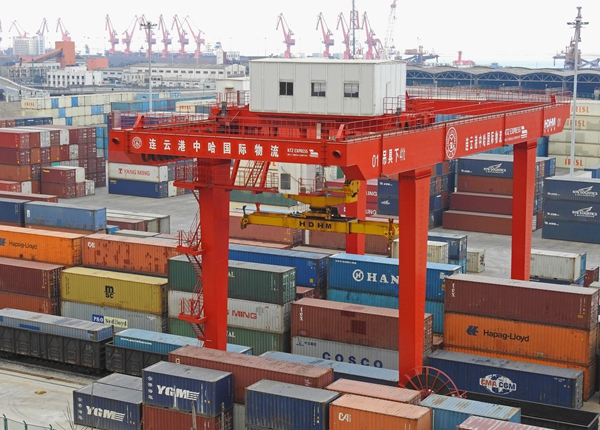
Work underway to import goods and products from Erlian border checkpoint www.montsame.mn
On December 14, B. Munkhjin, Deputy Minister for Foreign Affairs, reported that the operation to import goods and products from Erlian border checkpoint of China is being caried out in phases.
From December 10, 150 vehicles that had been stuck at the Erlian checkpoint for 60 days have begun to be moved to the middle zone at the borders between the two countries. Although more than 50 vehicles crossed the border last Saturday and Sunday, the movement stopped on Sunday. The Erlian side started to conduct assessment on how to improve the condition of isolation facilities for drivers entering the middle zone, what works should be done in the parking space.
“The assessment is the part of the process for import of goods and products from Erlian border checkpoint and it does not mean that the Erlian border checkpoint has closed again. Once the assessment is completed, the import operation will continue,” highlighted B.Munkhjin.
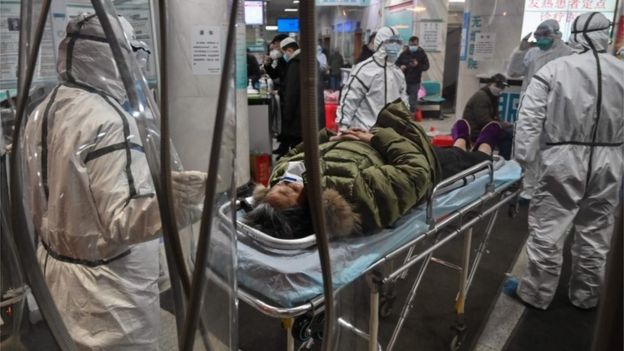
Covid: Omicron spreading at unprecedented rate, WHO says www.bbc.com
The new coronavirus variant Omicron is spreading across the globe at an unprecedented rate, the World Health Organization (WHO) has warned
Cases of the heavily mutated variant have been confirmed in 77 countries.
But at a press conference, WHO chief Tedros Adhanom Ghebreyesus said it was probably in many others that had yet to detect it.
Dr Tedros said he was concerned that not enough was being done to tackle the variant.
"Surely, we have learned by now that we underestimate this virus at our peril. Even if Omicron does cause less severe disease, the sheer number of cases could once again overwhelm unprepared health systems," he said.
The Omicron variant was first identified in South Africa in November, and the country has since seen a surge in infections. President Cyril Ramaphosa has tested positive for Covid-19, and is currently isolating with mild symptoms.
A number of countries have introduced travel bans affecting South Africa and its neighbours following the emergence of Omicron, but this has failed to stop it from spreading around the world.
In other developments
More than 800,000 Americans have now died from the coronavirus - the highest recorded national death toll from the global pandemic
UK Prime Minister Boris Johnson won backing for Covid passes in England, despite the biggest revolt by members of his party since he became PM
The UK government also announced on Tuesday that all 11 countries on its travel red list would be taken off, with Health Secretary Sajid Javid saying the Omicron variant had spread so widely the rules no longer had much purpose.
Italy has extended a state of emergency until 31 March 2022, citing concerns over Omicron. The measures, which were due to expire at the end of December, give the government more power to limit travel and public gatherings
The Netherlands says it will close primary schools a week before the Christmas holidays are due to start, in a pre-emptive bid to tackle infections
Norway has announced a ban on serving alcohol in bars and restaurants, among other measures
In the press conference on Tuesday, Dr Tedros reiterated concerns about vaccine inequity, as some countries accelerate rollouts of a booster shot in response to Omicron.
Recent studies of the Pfizer/BioNTech vaccine showed it produced far fewer neutralising antibodies against Omicron than against the original strain, but that this deficit could be reversed by a third, booster, jab.
Media caption,
What we know about Omicron and its impact on Africa
Dr Tedros said boosters "could play an important role" in curbing the spread of Covid-19, but that it was "a question of prioritisation".
"The order matters. Giving boosters to groups at low risk of severe disease or death simply endangers the lives of those at high risk who are still waiting for their primary doses because of supply constraints," he said.
Supplies to the global vaccine-sharing programme Covax have increased in recent months.
However, world health officials fear a shortfall of tens of millions of doses - like the one which occurred in the middle of this year when India suspended its vaccine exports - could happen again.
In poorer countries, some vulnerable people are yet to receive a single dose.
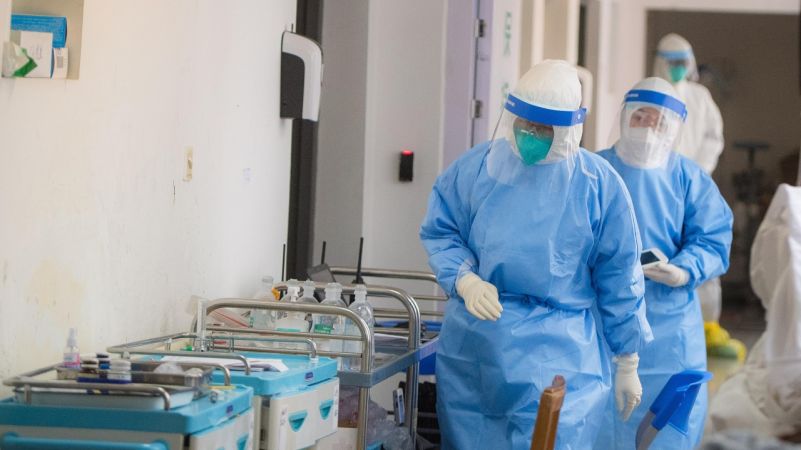
Mongolia confirmed 335 new daily cases of coronavirus www.akipress.com
Mongolia confirmed 335 new daily cases of coronavirus infection bringing the total number of cases to 387 141 as of Dec 15.
191 new cases were confirmed in Ulaanbaatar, 138 were confirmed in the regions of the country, and 6 were imported.
1 person died from coronavirus in a day.
Death toll from COVID-19 in Mongolia has increased to 1,966.
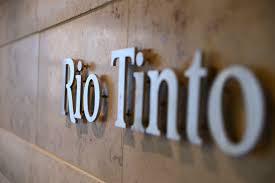
Rio Tinto Mongolian hardball ends up looking soft www.reuters.com
LONDON, Dec 13 (Reuters Breakingviews) - Jakob Stausholm’s hardball tactics have taken a softer turn. Rio Tinto’s (RIO.AX), (RIO.L) chief executive has offered to write off $2.3 billion of debt owed by the Mongolian state in exchange for making progress on the country’s $10 billion Oyu Tolgoi copper mine. The concession should let the $105 billion Anglo-Australian group keep hold of a bigger prize.
The reward is potentially very large. Once its key second phase starts production, probably in 2023, Oyu Tolgoi will be on track to become the world’s fourth-biggest copper mine at a time when the red metal’s price has soared. Yet the project is around two years late. Its rickety governance is partly to blame.
Rio is the majority shareholder in Turquoise Hill Resources (TRQ.TO), which holds 66% of Oyu Tolgoi, with the Government of Mongolia holding the remaining 34%. The problem is that the cash-strapped nation borrowed the cost of its initial stake from Turquoise Hill’s forerunner and agreed that any dividends from the project would first repay the loan. With interest accruing annually at Libor plus 6.5% the balance has reached $2.3 billion. Mongolia correctly feared it could be decades before it pocketed any dividends from the project.
Stausholm initially offered to cut the interest rate. Yet ultimately Mongolian Prime Minister Oyun-Erdene Luvsannamsrai had a stronger hand. In extremis the country could have thrown Rio off the project, putting Turquoise Hill’s $7 billion investment at risk. Hence the write-off.
The decision means Rio gives up potentially billions of dollars of future interest that Mongolia would have owed. However, it had no prospect of collecting the debt without the project going ahead. It’s also not a bad moment for Stausholm to take a hit. Rio Tinto has a $50 billion balance sheet, minimal net debt, and made a return on capital employed of 50% in the first half of 2021.
Meanwhile, Oyu Tolgoi ought to generate lots of cash. On average it could produce 350,000 tonnes of copper for 30 years, which at a 70% EBITDA margin and the current market price of $9,000 a tonne implies over $2 billion in annual EBITDA. A softball approach looks more profitable for everyone involved.
CONTEXT NEWS
- Anglo-Australian mining giant Rio Tinto has agreed to write off Mongolia’s outstanding $2.3 billion debt for its share in the Oyu Tolgoi copper-gold project, Prime Minister Oyun-Erdene Luvsannamsrai said on Dec. 13.
- Oyun-Erdene said his office had received a letter from Rio Tinto agreeing to write off the debt, conduct an independent audit into the financing of the project’s underground expansion and improve governance.
- “We have proposed that the benefits of Oyu Tolgoi be in the interests of the Mongolian people,” Oyun-Erdene told a briefing.
- A Rio Tinto spokesman said the offer made to Mongolia “aims to reset the relationship and allow all parties to move forward together”, without providing details.
- Rio shares were up 1.6% at 48.28 pounds at 0820 GMT on Dec. 13.

Forward from Mongolia commits to Dayton Flyers www.daytondailynews.com
The Dayton Flyers received a commitment from Enkhiin-Od Michael Sharavjamts, a native of Mongolia who plays for the International Sports Academy in Willoughby, Ohio, on Tuesday night.
A 6-foot-8 forward, Sharavjamts is the first member of the 2022 recruiting class to commit to Dayton. The Flyers would not have a scholarship open if every member of the 2021-22 team returned, though that’s unlikely in the age of the transfer portal.
The commitment of Sharavjamts continues a trend of foreign-born players picking the Flyers. The current roster has five international players: Mustapha Amzil (Finland); Toumani Camara (Belgium); Kobe Elvis (Canada); Moulaye Sissoko (Mali); and Richard Amaefule (England). That’s the most the program has ever had at one time.
Sharavjamts sat behind the bench when Dayton played Cedarville University in an exhibition game at UD Arena on Nov. 1.
Sharavjamts’ Instagram handle is “@MongolianMike.” He came to the United States in 2018 and played for Legacy Christian in Xenia in the 2018-19 season before transferring to Prolific Prep (Calif.), where he played the last two seasons. He joined ISA in August.
While at Legacy Christian, he helped lead the team to a league championship. He averaged 10.5 points in 19 games.
”It was a good year last year and learning about American basketball,” he told the Dayton Daily News in January 2020 while playing for Prolific Prep in the Flyin’ to the Hoop. “And this year I know about American basketball, and I’m trying my best.”
At that time, Sharavjamts had only one offer: from Eastern Washington.
Dayton first contacted Sharavjamts in June 2020, and he announced Sept. 29, 2021, he received a scholarship offer from Dayton. He received offers from Rutgers in July and from Providence in October.
Sharavjamts played in the summer, along with Centerville’s Gabe Cupps and Rich Rolf, for Midwest Basketball Club. He also played with Centerville for a time last summer.
His dad, Sharavjamts Tserenjanhor, a 7-foot center nicknamed the Mongolian Shark, played for the Harlem Globetrotters after being discovered by then LSU coach Dale Brown at a basketball clinic in Mongolia. Sharavjamts Tserenjanhor played at UD Arena in December 2001 with the Globetrotters.
In an interview with CityofBasketballLove.com last summer, the younger Sharavjamts said basketball is gaining in popularity in Mongolia.
“It’s a big sport in Mongolia,” he said. “Actually, 3-on-3, that’s the big sport.”
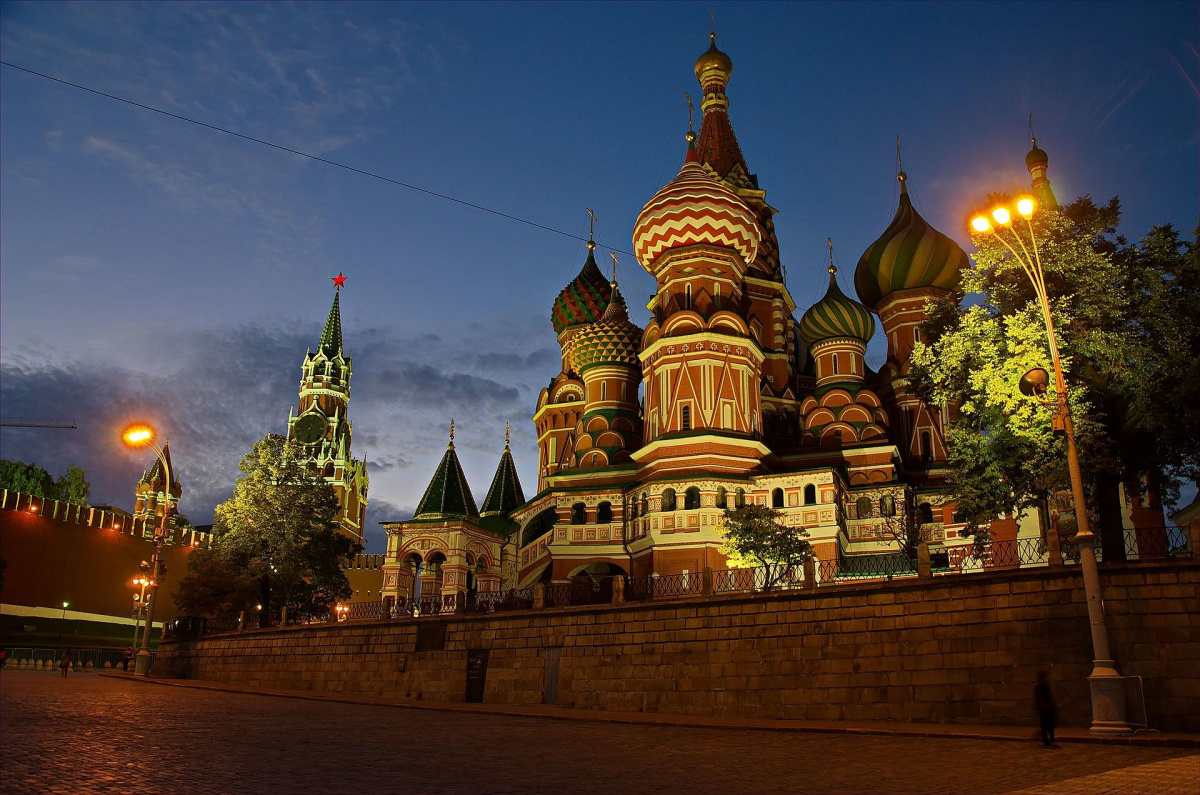
On December 16, Vladimir Putin will hold talks with President of Mongolia Ukhnaagiin Khurelsukh www.en.kremlin.ru
On December 16, Vladimir Putin will hold talks with President of Mongolia Ukhnaagiin Khurelsukh, who will be in Russia on a visit.
The two leaders will discuss the current state and prospects for the development of their countries’ comprehensive strategic partnership in politics, trade, the economy, science, technology and humanitarian sphere. They will also exchange views on interaction on the international stage.

China's Inner Mongolia region aims to earn five times more from rare earths by 2025 www.finance.yahoo.com
China's northern Inner Mongolia region is aiming for a fivefold increase in rare earth production value by 2025. This comes as the country's near-total dominance of global supply raises concerns about its possible use as a bargaining chip.
"Inner Mongolia's rare earth industry is in the unique position of having three elements - resources, manufacturing, and research and development - in one place," deputy chief of industry and information technology Wu Suhai said as he called for a consolidation of industry chains.
The region aims to reach rare earth production value of 100 billion yuan (US$15.7 billion) by 2025, he said on Sunday, an increase of about five times over 2020 figures.
Do you have questions about the biggest topics and trends from around the world? Get the answers with SCMP Knowledge, our new platform of curated content with explainers, FAQs, analyses and infographics brought to you by our award-winning team.
Rare earths are a group of 17 metals essential to manufacturing circuitry found in everyday electronics from fridges to mobile phones, as well as military vehicles.
The F-35 fighter jet, for instance, contains 417kg (919 lbs) of rare earths, making up about 3 per cent of its mass. The metals are also used in green technology, such as electric car batteries, wind turbines and solar panels.
China's supply of more than 85 per cent of the world's rare earth elements has led to fears that it could limit supply as a geopolitical leverage, disrupting industrial chains and hitting key industries of countries such as the United States, with which it has an ongoing trade war.
Baotou, the Inner Mongolian city known as China's rare earth capital and home to the vast majority of the region's rare earths extraction and processing facilities, reported 21.9 billion yuan in production value last year.
To reach the goal of 100 billion yuan by 2025, production value would need to grow by at least 30 per cent annually, Baotou mayor Zhang Rui noted.
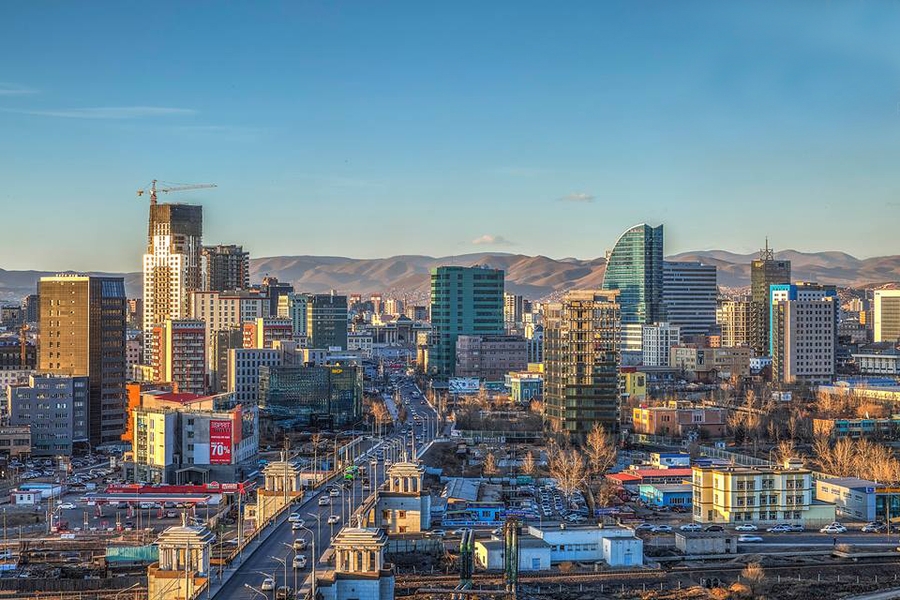
SLA Digital and Unitel partner for direct carrier billing in Mongolia www.developingtelecoms.com
Mongolian operator Unitel has selected SLA Digital as its managed service provider for carrier billing.
As part of the relationship, SLA Digital will be able to offer digital content providers access to Unitel’s other payment options including IPTV payments, Toki E-Wallet and payments made via U-Point, their points based loyalty program.
Kevin Drayne, CEO at SLA Digital said that the partnership with Unitel would “enable seamless and secure payment experiences for their customers through carrier billing… offering a vast range of digital content and entertainment with new convenient ways to pay.”
The partnership means Unitel will be able to introduce new digital content to customers from SLA Digital’s expanding client portfolio. Likewise, digital content providers can connect to Unitel’s mobile subscribers and expand into this region through a simple integration process.
Drayne added: “Our direct connection with Unitel Mongolia will allow our existing and new digital content partners to easily connect to the mobile operator and make the most of all the payment options available. We hope that more content and more ways to pay will lead to greater choice and satisfaction for Unitel customers.”
- «
- 1
- 2
- 3
- 4
- 5
- 6
- 7
- 8
- 9
- 10
- 11
- 12
- 13
- 14
- 15
- 16
- 17
- 18
- 19
- 20
- 21
- 22
- 23
- 24
- 25
- 26
- 27
- 28
- 29
- 30
- 31
- 32
- 33
- 34
- 35
- 36
- 37
- 38
- 39
- 40
- 41
- 42
- 43
- 44
- 45
- 46
- 47
- 48
- 49
- 50
- 51
- 52
- 53
- 54
- 55
- 56
- 57
- 58
- 59
- 60
- 61
- 62
- 63
- 64
- 65
- 66
- 67
- 68
- 69
- 70
- 71
- 72
- 73
- 74
- 75
- 76
- 77
- 78
- 79
- 80
- 81
- 82
- 83
- 84
- 85
- 86
- 87
- 88
- 89
- 90
- 91
- 92
- 93
- 94
- 95
- 96
- 97
- 98
- 99
- 100
- 101
- 102
- 103
- 104
- 105
- 106
- 107
- 108
- 109
- 110
- 111
- 112
- 113
- 114
- 115
- 116
- 117
- 118
- 119
- 120
- 121
- 122
- 123
- 124
- 125
- 126
- 127
- 128
- 129
- 130
- 131
- 132
- 133
- 134
- 135
- 136
- 137
- 138
- 139
- 140
- 141
- 142
- 143
- 144
- 145
- 146
- 147
- 148
- 149
- 150
- 151
- 152
- 153
- 154
- 155
- 156
- 157
- 158
- 159
- 160
- 161
- 162
- 163
- 164
- 165
- 166
- 167
- 168
- 169
- 170
- 171
- 172
- 173
- 174
- 175
- 176
- 177
- 178
- 179
- 180
- 181
- 182
- 183
- 184
- 185
- 186
- 187
- 188
- 189
- 190
- 191
- 192
- 193
- 194
- 195
- 196
- 197
- 198
- 199
- 200
- 201
- 202
- 203
- 204
- 205
- 206
- 207
- 208
- 209
- 210
- 211
- 212
- 213
- 214
- 215
- 216
- 217
- 218
- 219
- 220
- 221
- 222
- 223
- 224
- 225
- 226
- 227
- 228
- 229
- 230
- 231
- 232
- 233
- 234
- 235
- 236
- 237
- 238
- 239
- 240
- 241
- 242
- 243
- 244
- 245
- 246
- 247
- 248
- 249
- 250
- 251
- 252
- 253
- 254
- 255
- 256
- 257
- 258
- 259
- 260
- 261
- 262
- 263
- 264
- 265
- 266
- 267
- 268
- 269
- 270
- 271
- 272
- 273
- 274
- 275
- 276
- 277
- 278
- 279
- 280
- 281
- 282
- 283
- 284
- 285
- 286
- 287
- 288
- 289
- 290
- 291
- 292
- 293
- 294
- 295
- 296
- 297
- 298
- 299
- 300
- 301
- 302
- 303
- 304
- 305
- 306
- 307
- 308
- 309
- 310
- 311
- 312
- 313
- 314
- 315
- 316
- 317
- 318
- 319
- 320
- 321
- 322
- 323
- 324
- 325
- 326
- 327
- 328
- 329
- 330
- 331
- 332
- 333
- 334
- 335
- 336
- 337
- 338
- 339
- 340
- 341
- 342
- 343
- 344
- 345
- 346
- 347
- 348
- 349
- 350
- 351
- 352
- 353
- 354
- 355
- 356
- 357
- 358
- 359
- 360
- 361
- 362
- 363
- 364
- 365
- 366
- 367
- 368
- 369
- 370
- 371
- 372
- 373
- 374
- 375
- 376
- 377
- 378
- 379
- 380
- 381
- 382
- 383
- 384
- 385
- 386
- 387
- 388
- 389
- 390
- 391
- 392
- 393
- 394
- 395
- 396
- 397
- 398
- 399
- 400
- 401
- 402
- 403
- 404
- 405
- 406
- 407
- 408
- 409
- 410
- 411
- 412
- 413
- 414
- 415
- 416
- 417
- 418
- 419
- 420
- 421
- 422
- 423
- 424
- 425
- 426
- 427
- 428
- 429
- 430
- 431
- 432
- 433
- 434
- 435
- 436
- 437
- 438
- 439
- 440
- 441
- 442
- 443
- 444
- 445
- 446
- 447
- 448
- 449
- 450
- 451
- 452
- 453
- 454
- 455
- 456
- 457
- 458
- 459
- 460
- 461
- 462
- 463
- 464
- 465
- 466
- 467
- 468
- 469
- 470
- 471
- 472
- 473
- 474
- 475
- 476
- 477
- 478
- 479
- 480
- 481
- 482
- 483
- 484
- 485
- 486
- 487
- 488
- 489
- 490
- 491
- 492
- 493
- 494
- 495
- 496
- 497
- 498
- 499
- 500
- 501
- 502
- 503
- 504
- 505
- 506
- 507
- 508
- 509
- 510
- 511
- 512
- 513
- 514
- 515
- 516
- 517
- 518
- 519
- 520
- 521
- 522
- 523
- 524
- 525
- 526
- 527
- 528
- 529
- 530
- 531
- 532
- 533
- 534
- 535
- 536
- 537
- 538
- 539
- 540
- 541
- 542
- 543
- 544
- 545
- 546
- 547
- 548
- 549
- 550
- 551
- 552
- 553
- 554
- 555
- 556
- 557
- 558
- 559
- 560
- 561
- 562
- 563
- 564
- 565
- 566
- 567
- 568
- 569
- 570
- 571
- 572
- 573
- 574
- 575
- 576
- 577
- 578
- 579
- 580
- 581
- 582
- 583
- 584
- 585
- 586
- 587
- 588
- 589
- 590
- 591
- 592
- 593
- 594
- 595
- 596
- 597
- 598
- 599
- 600
- 601
- 602
- 603
- 604
- 605
- 606
- 607
- 608
- 609
- 610
- 611
- 612
- 613
- 614
- 615
- 616
- 617
- 618
- 619
- 620
- 621
- 622
- 623
- 624
- 625
- 626
- 627
- 628
- 629
- 630
- 631
- 632
- 633
- 634
- 635
- 636
- 637
- 638
- 639
- 640
- 641
- 642
- 643
- 644
- 645
- 646
- 647
- 648
- 649
- 650
- 651
- 652
- 653
- 654
- 655
- 656
- 657
- 658
- 659
- 660
- 661
- 662
- 663
- 664
- 665
- 666
- 667
- 668
- 669
- 670
- 671
- 672
- 673
- 674
- 675
- 676
- 677
- 678
- 679
- 680
- 681
- 682
- 683
- 684
- 685
- 686
- 687
- 688
- 689
- 690
- 691
- 692
- 693
- 694
- 695
- 696
- 697
- 698
- 699
- 700
- 701
- 702
- 703
- 704
- 705
- 706
- 707
- 708
- 709
- 710
- 711
- 712
- 713
- 714
- 715
- 716
- 717
- 718
- 719
- 720
- 721
- 722
- 723
- 724
- 725
- 726
- 727
- 728
- 729
- 730
- 731
- 732
- 733
- 734
- 735
- 736
- 737
- 738
- 739
- 740
- 741
- 742
- 743
- 744
- 745
- 746
- 747
- 748
- 749
- 750
- 751
- 752
- 753
- 754
- 755
- 756
- 757
- 758
- 759
- 760
- 761
- 762
- 763
- 764
- 765
- 766
- 767
- 768
- 769
- 770
- 771
- 772
- 773
- 774
- 775
- 776
- 777
- 778
- 779
- 780
- 781
- 782
- 783
- 784
- 785
- 786
- 787
- 788
- 789
- 790
- 791
- 792
- 793
- 794
- 795
- 796
- 797
- 798
- 799
- 800
- 801
- 802
- 803
- 804
- 805
- 806
- 807
- 808
- 809
- 810
- 811
- 812
- 813
- 814
- 815
- 816
- 817
- 818
- 819
- 820
- 821
- 822
- 823
- 824
- 825
- 826
- 827
- 828
- 829
- 830
- 831
- 832
- 833
- 834
- 835
- 836
- 837
- 838
- 839
- 840
- 841
- 842
- 843
- 844
- 845
- 846
- 847
- 848
- 849
- 850
- 851
- 852
- 853
- 854
- 855
- 856
- 857
- 858
- 859
- 860
- 861
- 862
- 863
- 864
- 865
- 866
- 867
- 868
- 869
- 870
- 871
- 872
- 873
- 874
- 875
- 876
- 877
- 878
- 879
- 880
- 881
- 882
- 883
- 884
- 885
- 886
- 887
- 888
- 889
- 890
- 891
- 892
- 893
- 894
- 895
- 896
- 897
- 898
- 899
- 900
- 901
- 902
- 903
- 904
- 905
- 906
- 907
- 908
- 909
- 910
- 911
- 912
- 913
- 914
- 915
- 916
- 917
- 918
- 919
- 920
- 921
- 922
- 923
- 924
- 925
- 926
- 927
- 928
- 929
- 930
- 931
- 932
- 933
- 934
- 935
- 936
- 937
- 938
- 939
- 940
- 941
- 942
- 943
- 944
- 945
- 946
- 947
- 948
- 949
- 950
- 951
- 952
- 953
- 954
- 955
- 956
- 957
- 958
- 959
- 960
- 961
- 962
- 963
- 964
- 965
- 966
- 967
- 968
- 969
- 970
- 971
- 972
- 973
- 974
- 975
- 976
- 977
- 978
- 979
- 980
- 981
- 982
- 983
- 984
- 985
- 986
- 987
- 988
- 989
- 990
- 991
- 992
- 993
- 994
- 995
- 996
- 997
- 998
- 999
- 1000
- 1001
- 1002
- 1003
- 1004
- 1005
- 1006
- 1007
- 1008
- 1009
- 1010
- 1011
- 1012
- 1013
- 1014
- 1015
- 1016
- 1017
- 1018
- 1019
- 1020
- 1021
- 1022
- 1023
- 1024
- 1025
- 1026
- 1027
- 1028
- 1029
- 1030
- 1031
- 1032
- 1033
- 1034
- 1035
- 1036
- 1037
- 1038
- 1039
- 1040
- 1041
- 1042
- 1043
- 1044
- 1045
- 1046
- 1047
- 1048
- 1049
- 1050
- 1051
- 1052
- 1053
- 1054
- 1055
- 1056
- 1057
- 1058
- 1059
- 1060
- 1061
- 1062
- 1063
- 1064
- 1065
- 1066
- 1067
- 1068
- 1069
- 1070
- 1071
- 1072
- 1073
- 1074
- 1075
- 1076
- 1077
- 1078
- 1079
- 1080
- 1081
- 1082
- 1083
- 1084
- 1085
- 1086
- 1087
- 1088
- 1089
- 1090
- 1091
- 1092
- 1093
- 1094
- 1095
- 1096
- 1097
- 1098
- 1099
- 1100
- 1101
- 1102
- 1103
- 1104
- 1105
- 1106
- 1107
- 1108
- 1109
- 1110
- 1111
- 1112
- 1113
- 1114
- 1115
- 1116
- 1117
- 1118
- 1119
- 1120
- 1121
- 1122
- 1123
- 1124
- 1125
- 1126
- 1127
- 1128
- 1129
- 1130
- 1131
- 1132
- 1133
- 1134
- 1135
- 1136
- 1137
- 1138
- 1139
- 1140
- 1141
- 1142
- 1143
- 1144
- 1145
- 1146
- 1147
- 1148
- 1149
- 1150
- 1151
- 1152
- 1153
- 1154
- 1155
- 1156
- 1157
- 1158
- 1159
- 1160
- 1161
- 1162
- 1163
- 1164
- 1165
- 1166
- 1167
- 1168
- 1169
- 1170
- 1171
- 1172
- 1173
- 1174
- 1175
- 1176
- 1177
- 1178
- 1179
- 1180
- 1181
- 1182
- 1183
- 1184
- 1185
- 1186
- 1187
- 1188
- 1189
- 1190
- 1191
- 1192
- 1193
- 1194
- 1195
- 1196
- 1197
- 1198
- 1199
- 1200
- 1201
- 1202
- 1203
- 1204
- 1205
- 1206
- 1207
- 1208
- 1209
- 1210
- 1211
- 1212
- 1213
- 1214
- 1215
- 1216
- 1217
- 1218
- 1219
- 1220
- 1221
- 1222
- 1223
- 1224
- 1225
- 1226
- 1227
- 1228
- 1229
- 1230
- 1231
- 1232
- 1233
- 1234
- 1235
- 1236
- 1237
- 1238
- 1239
- 1240
- 1241
- 1242
- 1243
- 1244
- 1245
- 1246
- 1247
- 1248
- 1249
- 1250
- 1251
- 1252
- 1253
- 1254
- 1255
- 1256
- 1257
- 1258
- 1259
- 1260
- 1261
- 1262
- 1263
- 1264
- 1265
- 1266
- 1267
- 1268
- 1269
- 1270
- 1271
- 1272
- 1273
- 1274
- 1275
- 1276
- 1277
- 1278
- 1279
- 1280
- 1281
- 1282
- 1283
- 1284
- 1285
- 1286
- 1287
- 1288
- 1289
- 1290
- 1291
- 1292
- 1293
- 1294
- 1295
- 1296
- 1297
- 1298
- 1299
- 1300
- 1301
- 1302
- 1303
- 1304
- 1305
- 1306
- 1307
- 1308
- 1309
- 1310
- 1311
- 1312
- 1313
- 1314
- 1315
- 1316
- 1317
- 1318
- 1319
- 1320
- 1321
- 1322
- 1323
- 1324
- 1325
- 1326
- 1327
- 1328
- 1329
- 1330
- 1331
- 1332
- 1333
- 1334
- 1335
- 1336
- 1337
- 1338
- 1339
- 1340
- 1341
- 1342
- 1343
- 1344
- 1345
- 1346
- 1347
- 1348
- 1349
- 1350
- 1351
- 1352
- 1353
- 1354
- 1355
- 1356
- 1357
- 1358
- 1359
- 1360
- 1361
- 1362
- 1363
- 1364
- 1365
- 1366
- 1367
- 1368
- 1369
- 1370
- 1371
- 1372
- 1373
- 1374
- 1375
- 1376
- 1377
- 1378
- 1379
- 1380
- 1381
- 1382
- 1383
- 1384
- 1385
- 1386
- 1387
- 1388
- 1389
- 1390
- 1391
- 1392
- 1393
- 1394
- 1395
- 1396
- 1397
- 1398
- 1399
- 1400
- 1401
- 1402
- 1403
- 1404
- 1405
- 1406
- 1407
- 1408
- 1409
- 1410
- 1411
- 1412
- 1413
- 1414
- 1415
- 1416
- 1417
- 1418
- 1419
- 1420
- 1421
- 1422
- 1423
- 1424
- 1425
- 1426
- 1427
- 1428
- 1429
- 1430
- 1431
- 1432
- 1433
- 1434
- 1435
- 1436
- 1437
- 1438
- 1439
- 1440
- 1441
- 1442
- 1443
- 1444
- 1445
- 1446
- 1447
- 1448
- 1449
- 1450
- 1451
- 1452
- 1453
- 1454
- 1455
- 1456
- 1457
- 1458
- 1459
- 1460
- 1461
- 1462
- 1463
- 1464
- 1465
- 1466
- 1467
- 1468
- 1469
- 1470
- 1471
- 1472
- 1473
- 1474
- 1475
- 1476
- 1477
- 1478
- 1479
- 1480
- 1481
- 1482
- 1483
- 1484
- 1485
- 1486
- 1487
- 1488
- 1489
- 1490
- 1491
- 1492
- 1493
- 1494
- 1495
- 1496
- 1497
- 1498
- 1499
- 1500
- 1501
- 1502
- 1503
- 1504
- 1505
- 1506
- 1507
- 1508
- 1509
- 1510
- 1511
- 1512
- 1513
- 1514
- 1515
- 1516
- 1517
- 1518
- 1519
- 1520
- 1521
- 1522
- 1523
- 1524
- 1525
- 1526
- 1527
- 1528
- 1529
- 1530
- 1531
- 1532
- 1533
- 1534
- 1535
- 1536
- 1537
- 1538
- 1539
- 1540
- 1541
- 1542
- 1543
- 1544
- 1545
- 1546
- 1547
- 1548
- 1549
- 1550
- 1551
- 1552
- 1553
- 1554
- 1555
- 1556
- 1557
- 1558
- 1559
- 1560
- 1561
- 1562
- 1563
- 1564
- 1565
- 1566
- 1567
- 1568
- 1569
- 1570
- 1571
- 1572
- 1573
- 1574
- 1575
- 1576
- 1577
- 1578
- 1579
- 1580
- 1581
- 1582
- 1583
- 1584
- 1585
- 1586
- 1587
- 1588
- 1589
- 1590
- 1591
- 1592
- 1593
- 1594
- 1595
- 1596
- 1597
- 1598
- 1599
- 1600
- 1601
- 1602
- 1603
- 1604
- 1605
- 1606
- 1607
- 1608
- 1609
- 1610
- 1611
- 1612
- 1613
- 1614
- 1615
- 1616
- 1617
- 1618
- 1619
- 1620
- 1621
- 1622
- 1623
- 1624
- 1625
- 1626
- 1627
- 1628
- 1629
- 1630
- 1631
- 1632
- 1633
- 1634
- 1635
- 1636
- 1637
- 1638
- 1639
- 1640
- 1641
- 1642
- 1643
- 1644
- 1645
- 1646
- 1647
- 1648
- 1649
- 1650
- 1651
- 1652
- 1653
- 1654
- 1655
- 1656
- 1657
- 1658
- 1659
- 1660
- 1661
- 1662
- 1663
- 1664
- 1665
- 1666
- 1667
- 1668
- 1669
- 1670
- 1671
- 1672
- 1673
- 1674
- 1675
- 1676
- 1677
- 1678
- 1679
- 1680
- 1681
- 1682
- 1683
- 1684
- 1685
- 1686
- 1687
- 1688
- 1689
- 1690
- 1691
- 1692
- 1693
- 1694
- »






